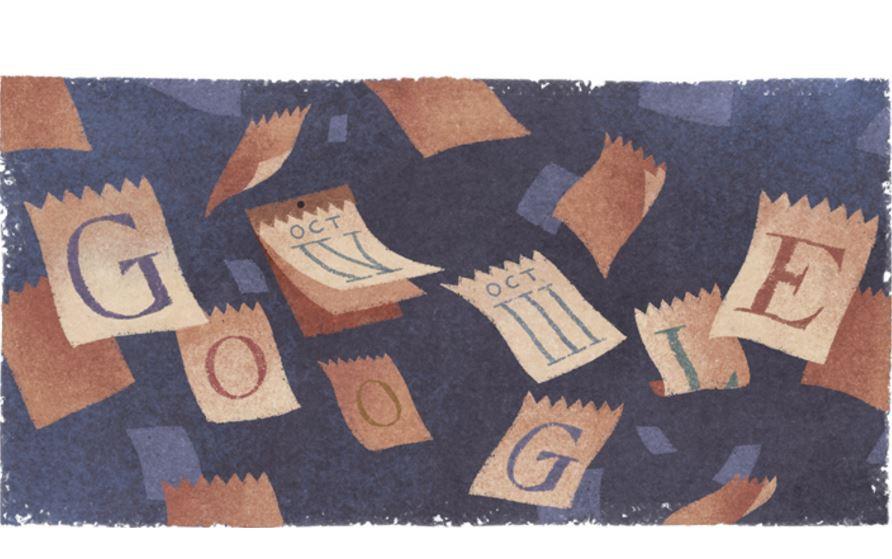Gregorian Calendar: Five facts you didn't know
A Google doodle is celebrating the anniversary of the implementation of our solar calendar

Your support helps us to tell the story
From reproductive rights to climate change to Big Tech, The Independent is on the ground when the story is developing. Whether it's investigating the financials of Elon Musk's pro-Trump PAC or producing our latest documentary, 'The A Word', which shines a light on the American women fighting for reproductive rights, we know how important it is to parse out the facts from the messaging.
At such a critical moment in US history, we need reporters on the ground. Your donation allows us to keep sending journalists to speak to both sides of the story.
The Independent is trusted by Americans across the entire political spectrum. And unlike many other quality news outlets, we choose not to lock Americans out of our reporting and analysis with paywalls. We believe quality journalism should be available to everyone, paid for by those who can afford it.
Your support makes all the difference.With calendar-like predictability, 4 October marks the 434th anniversary of the introduction of the Gregorian calendar.
The happy occasion has been celebrated with the release of a date-themed Google doodle.
The Gregorian calendar is internationally the most widely used civil calendar, and has been providing us with a dependable means of determining the date since its introduction back in 1582.
But why was it needed, and how does it differ from its predecessor – the Julian calendar?
We examine three facts about the Gregorian calendar that help explain its introduction.
It’s only 11 minutes different from the Julian calendar
The Gregorian calendar’s predecessor, the Julian calendar, was a solar-based calendar introduced in 46BC during the reign of Julius Caesar. It featured 365 days and a leap year that added one day to February every four years – a system we are all familiar with today. So why did it need changing?
Under the Julian calendar the length of a year was 465 days and six hours. But over a thousand years after its introduction, the calendar had drifted, and was out of sync with equinoxes and solstices, meaning Easter, which is set by the Vernal equinox, was occurring later and later in the year.
The Gregorian calendar was introduced to fix this small error in date computation.
The existing Julian calendar was therefore refined, the result of which was to shorten the length of a year to 365 days, 5 hours, 49 minutes and 12 seconds.
The change under the introduction of the Gregorian calendar meant that leap years continued occurring every four years, however, over a four hundred-year period, the number of leap years fell to 97 from 100.
This is managed by making some centurial years non-leap years, even though they fall four years after the last leap year.
The next non-leap year will be in 2100.

It was named after Pope Gregory XIII
Pope Gregory XIII introduced the calendar, which was announced five years after calling for a solution to the drifting equinoxes.
Ten days were erased from history in 1582
With the introduction of the Gregorian calendar, ten days were erased from time. The days between October 5 and October 14, 1582 have never existed.
In order to make the transition to the Gregorian alendar, the day after October 4, 1582 was declared October 15th, thereby resetting the drift that had built up since the Julian calendar’s introduction.
Early adopters
The system was first implemented in Italy, along with Spain and Portugal. The rest of Western Europe quickly followed suit, although Britain remained using the Julian calendar until 1752.
Turkey hung on until 1917 before moving the Gregorian system from the Islamic Hijri calendar.
Saudi Arabia switched to the Gregorian calendar this week
Saudi Arabia switched to the Gregorian calendar this week, just in time for the 434th anniversary celebrations.
The country had used the lunar-based Hijri Calendar since the Kingdom was founded in 1932, but has switched to the Gregorian calendar to pay civil servants.
The Islamic lunar calendar usually has a year of 354 days – 11 days shorter than either the old Julian, or newer Gregorian calendars.
The move will mean Saudi civil servants will lo se 11 days of payment as salary days are cut. It is one of many belt-tightening measure announced as the country seeks to reduce its high budget deficit.
Join our commenting forum
Join thought-provoking conversations, follow other Independent readers and see their replies
Comments